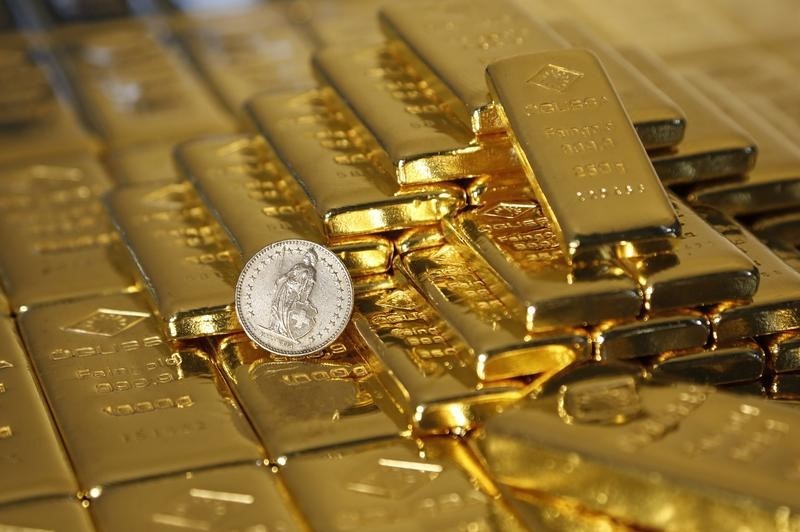Investing.com -- Gold prices hovered just above two-month lows on Thursday, sticking to a holding pattern seen in recent weeks as markets awaited an upcoming Federal Reserve meeting.
Copper prices edged lower as weak economic signals from China continued to trickle in, raising concerns over sustained demand in the largest importer of the red metal.
Gold in holding pattern as Fed meeting looms
The yellow metal has kept to a tight trading range for nearly three weeks, coming under pressure from a resurgence in the dollar and treasury yields as markets speculated over the Fed’s stance on more interest rate hikes.
Gold futures fluctuated between $1,940 to $2,000 an ounce, while spot gold kept to between $1,930 to $1,980 an ounce since mid-May.
Surprise rate hikes in Australia and Canada pushed up some expectations that the Fed will also follow suit, given that U.S. inflation and the labor market are running well above the central bank’s targets.
But U.S. economic growth has also cooled substantially in recent months, which gives the Fed limited headroom to keep hiking rates.
Rising rates bode poorly for non-yielding assets such as gold, given that they push up their opportunity cost. But even if the Fed announces a pause next week, U.S. rates are expected to remain higher for longer, keeping metal markets under pressure.
Spot gold rose 0.3% to $1,944.06 an ounce, while gold futures steadied at $1,959.65 an ounce by 20:06 ET (00:06 GMT).
Still, analysts see the yellow metal benefiting from safe haven demand, in the event of a U.S. recession later this year. But in the interim, strength in the dollar is expected to limit any major gains in gold.
Copper pressured by weak Chinese signals
Among industrial metals, copper prices fell slightly on Thursday, extending losses from the prior session after weaker-than-expected Chinese trade data pointed to more headwinds for copper demand.
Copper futures fell 0.1% to $3.7532 a pound, after losing 0.5% on Wednesday.
China’s copper imports fell 4.6% in May from the prior month, data showed on Wednesday, while the country’s overall trade surplus shrank to a 13-month low.
While overall imports to the country showed some signs of improvement, a sharper-than-expected drop in exports pointed to more near-term economic pain, especially for China’s massive manufacturing sector.
